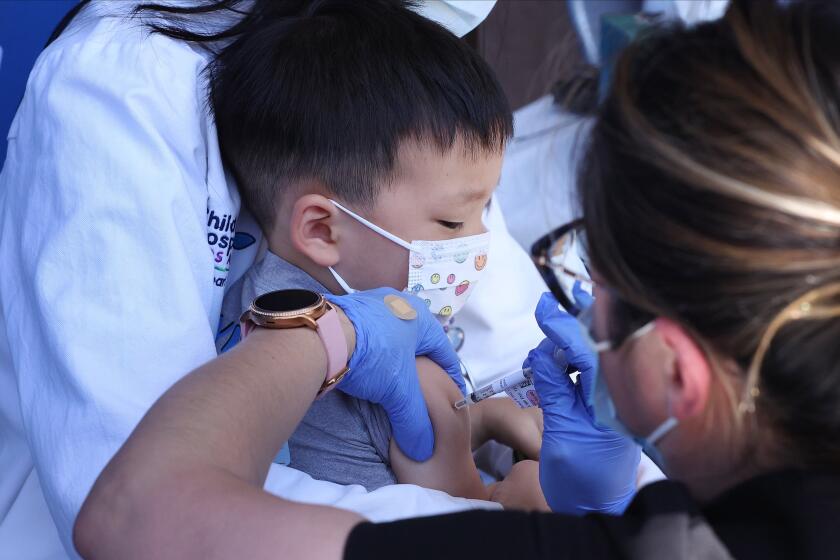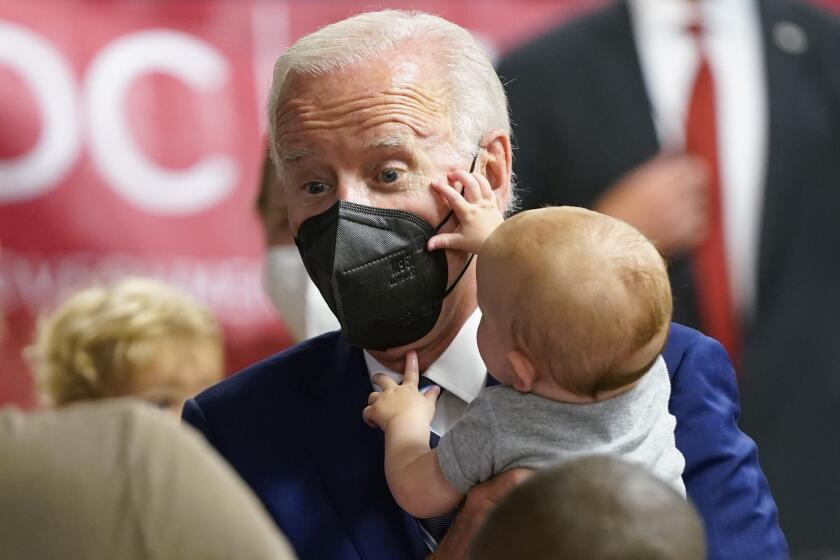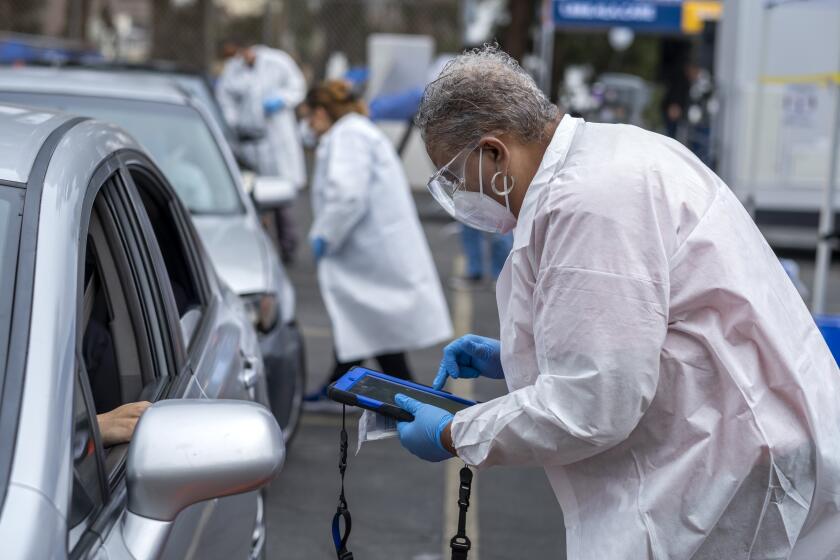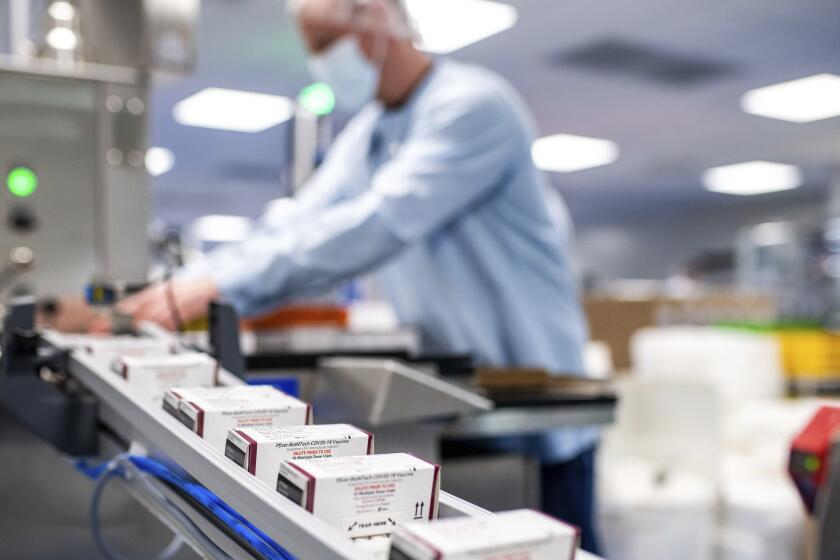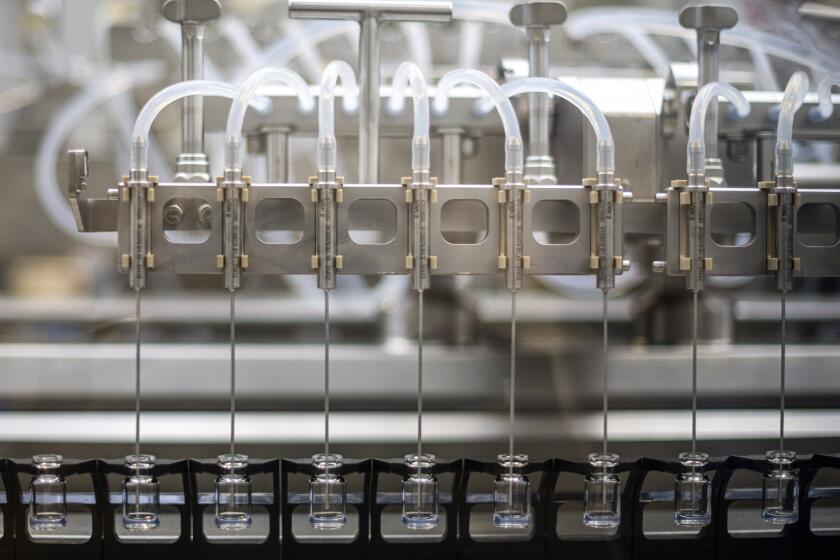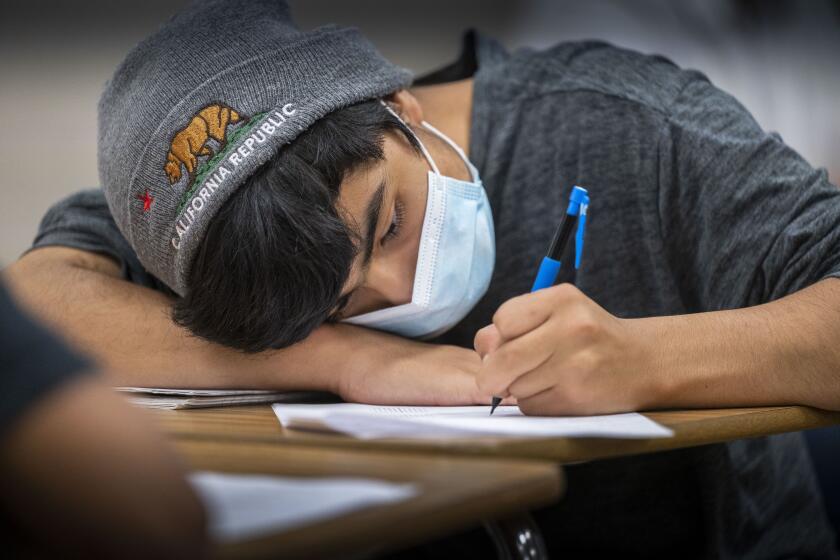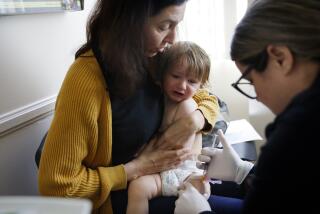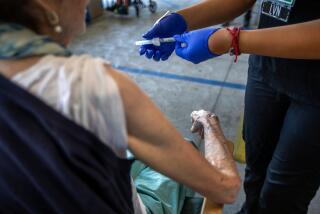2 million California kids are now eligible for COVID vaccine. How many will get it?
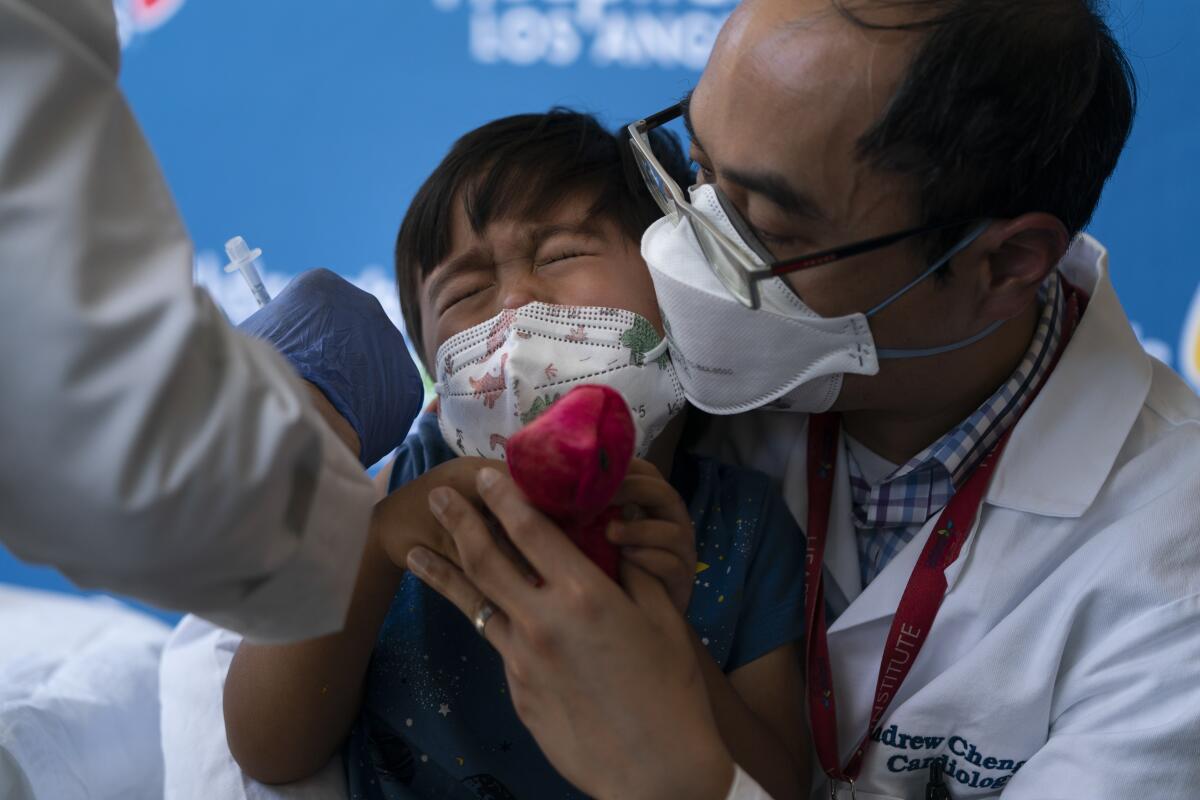
Jonah Stein exited the vaccination clinic in his father’s arms Tuesday afternoon, proud to show off his Band-Aid.
This “little booboo,” as the 2-year-old put it, was a long time coming. It marked the spot where he received his first dose of Moderna COVID-19 vaccine — much to the relief of his parents, who also have a 3-week-old at home.
“We’ll have a greater level of comfort going out and doing things and knowing when [Jonah is] at daycare, he’ll be less likely to catch it and bring it home to his brother,” father Nathan Stein, who works as a cardiologist, said outside Clinica Medica Fatima in downtown Los Angeles.
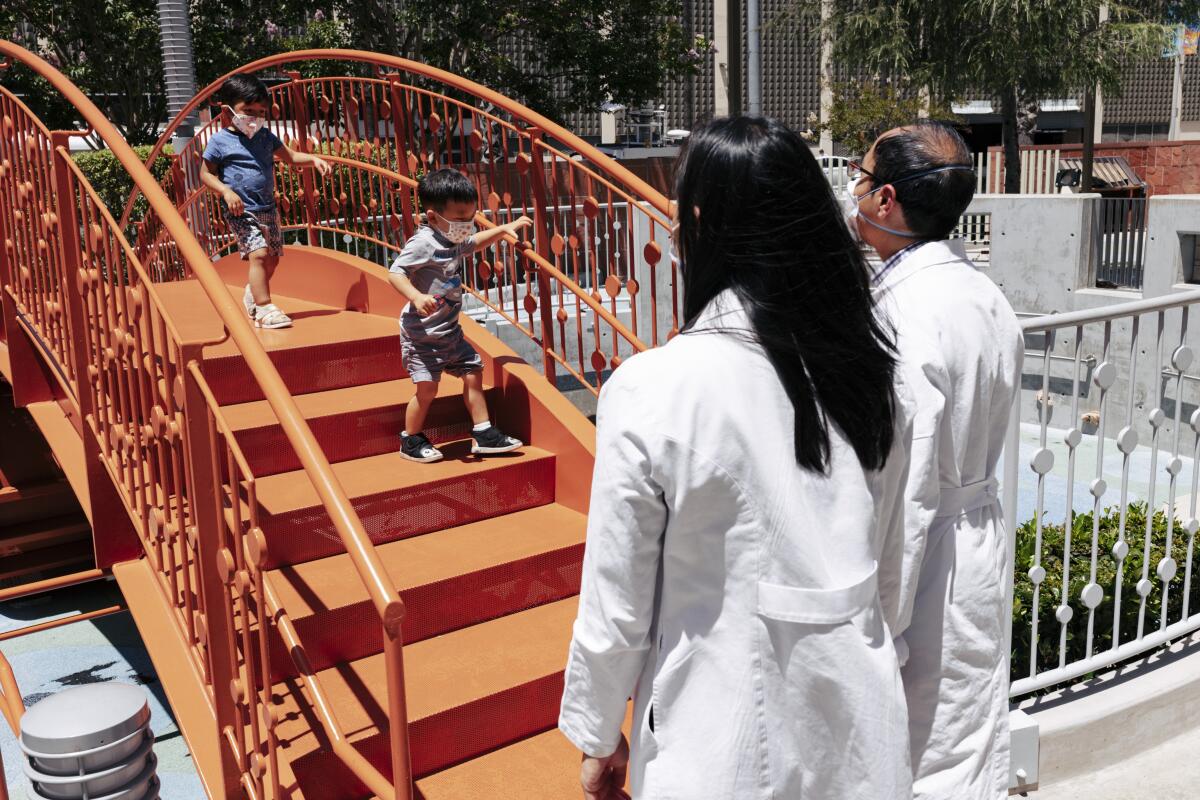
Jonah, however, was focused on more immediate concerns; namely, the cookies waiting for him in the car.
Following the recent decision by federal health officials to authorize children as young as 6 months to receive either the Moderna or the Pfizer-BioNTech COVID-19 vaccine, Californians are able to book appointments for their tiniest charges.
The move marks the last major expansion of the U.S. COVID-19 vaccination campaign, which sputtered to life in highly limited form in December 2020. Since then, officials have opened access to the vaccines to virtually all Americans, the vast majority of whom have received them.
The final major phase of the COVID-19 vaccination campaign kicked off this week, with California finally able to inoculate children under 5.
But until now, shots for the youngest remained elusive — leaving many families in the position of having everyone but the baby inoculated.
Erin Acain noted that her 6-year-old daughter got her vaccine eight months ago, but her 1-year-old son wasn’t able to do so until Tuesday.
“I am feeling very relieved,” Acain said, balancing her son on her hip. “We’ve been waiting for this for a really long time.”
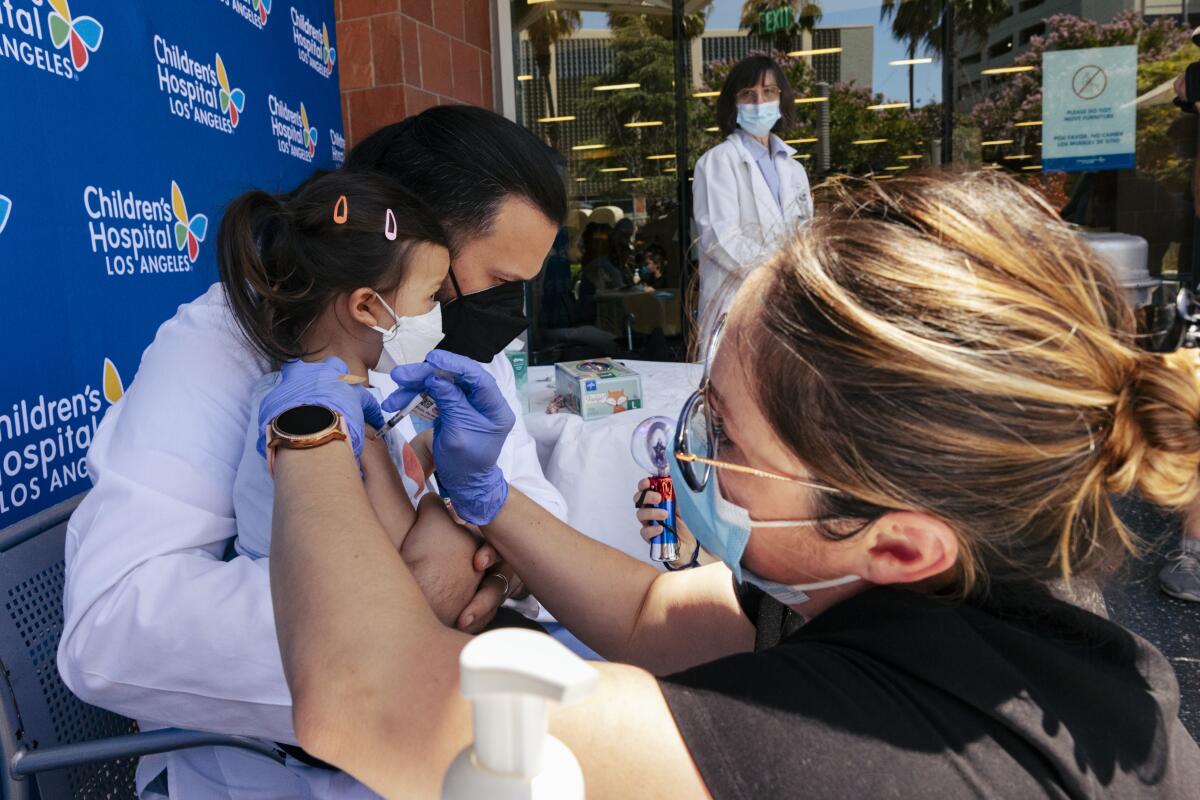
There are approximately 2.2 million Californians under age 5 who are now eligible to be vaccinated, according to state health officials.
Dr. Mark Ghaly, California’s health and human services secretary, called the expansion “an exciting time in our fight against COVID-19.”
“This means that the whole family, essentially, can be vaccinated,” he said in a video statement. “That means protection against the short-term and long-term consequences of COVID; that means an opportunity to take that summer vacation, send your kid off to summer camp, send them to a birthday party, get ready for school — things that I know many of us have done with a bit of trepidation over the last couple of years. [It] means that our young people can thrive in the activities we know make a difference in their lives.”
Biden visited a vaccination clinic in Washington, where some of the first shots were given to young children in the last major age group ineligible for vaccines.
Aevin Lee, 2, sat on his mother’s lap and played with a bumblebee toy while he got his first Pfizer-BioNTech vaccine dose outside Children’s Hospital Los Angeles.
Afterward, his mom — pediatric cardiologist Dr. Jennifer Su — handed him two new toy cars before looking up at the assortment of news cameras documenting the occasion.
“He didn’t even notice,” Su said, her smile visible even through her mask.
As if to illustrate the point, Aevin ran off to explore a nearby playground.
“It’s important to stand up for what we really think is right,” Su said of the vaccines. “We can’t expect people to follow our recommendations if we’re not willing to do it ourselves. I’m more than willing to show others that I would recommend this for everyone.”
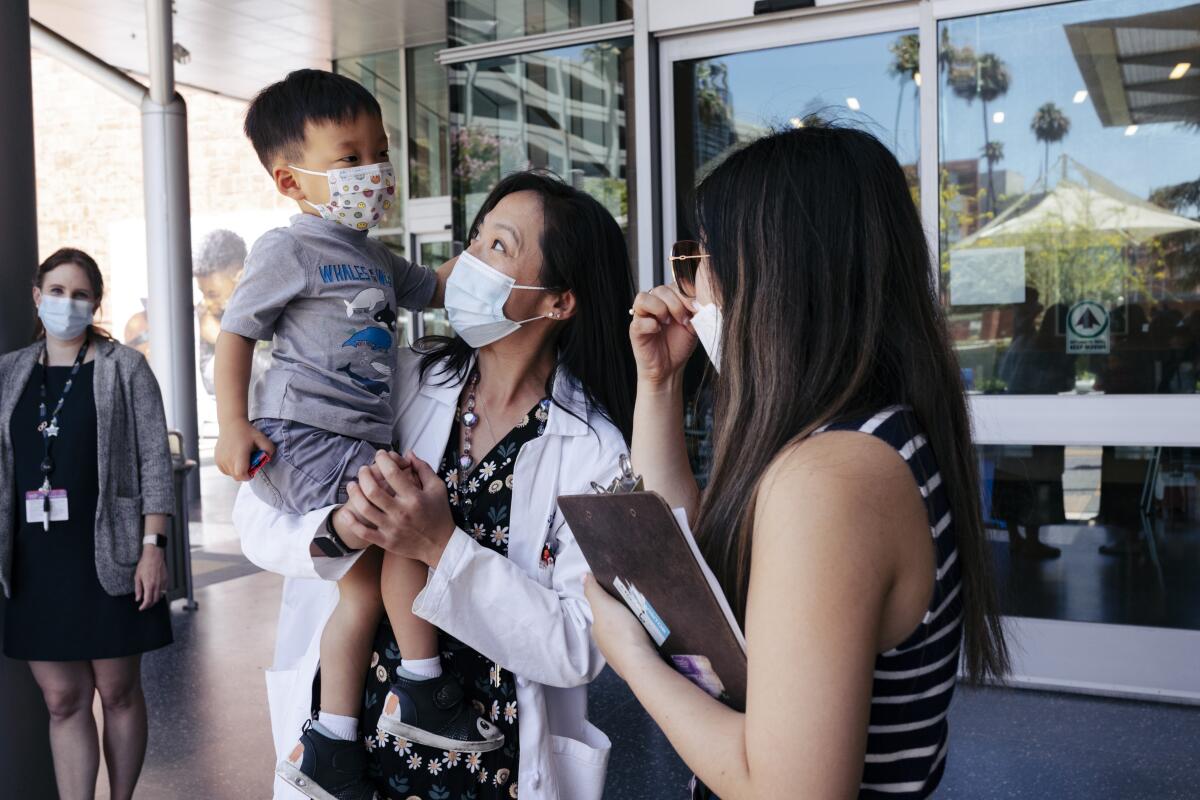
The Pfizer-BioNTech vaccine had already been available for those age 5 and older, but Moderna had been adults-only up to this point.
The Moderna offering is administered as a two-dose course for the youngest children, with the shots given one month apart. Each shot is a quarter the amount of the typical adult dose.
Three Pfizer shots, each 10% of the adult dose, are needed — with the initial two given three weeks apart and the third at least eight weeks after.
Despite the latest surge in coronavirus cases, the impact on hospitals has been relatively minor and COVID-19 deaths have remained fairly low and stable.
Dr. Pia Pannaraj, an infectious-diseases specialist at Children’s Hospital Los Angeles, said Tuesday was exciting for her team and the community.
“It’s a big event for families with young children who have been waiting all this time,” Pannaraj said. “We finally have a way to protect them as well.”
Pannaraj said the vaccines have been determined to be safe and effective, but children could experience minor side effects, such as pain or redness at the injection site or a slight fever, but those symptoms should be gone within 24 hours.
While some parents have been anxiously awaiting the chance to get their children vaccinated, it remains to be seen how robust demand will be.
In a poll from the Kaiser Family Foundation published in May, 18% of parents of children under 5 said they planned to get their child vaccinated “right away,” while 38% said they would “wait and see.” However, 27% of poll respondents said they would “definitely not” get their young child vaccinated, and 11% said they would do so “only if required.”
U.S. health officials recommended COVID-19 vaccines for infants, toddlers and preschoolers.
According to the report, “lack of available information may be a factor in parents’ reluctance to get their youngest children vaccinated right away. A majority of parents of children under 5 say they don’t have enough information about the safety and effectiveness of COVID-19 vaccines for children in this age group.”
The vaccination campaign for another cohort of children — those ages 5 to 11 — is lagging behind other groups. A little more than one-third of Californians in this age range are fully vaccinated, compared with 67% of 12- to 17-year-olds and 78% of 18- to 49-year-olds, according to data compiled by The Times.
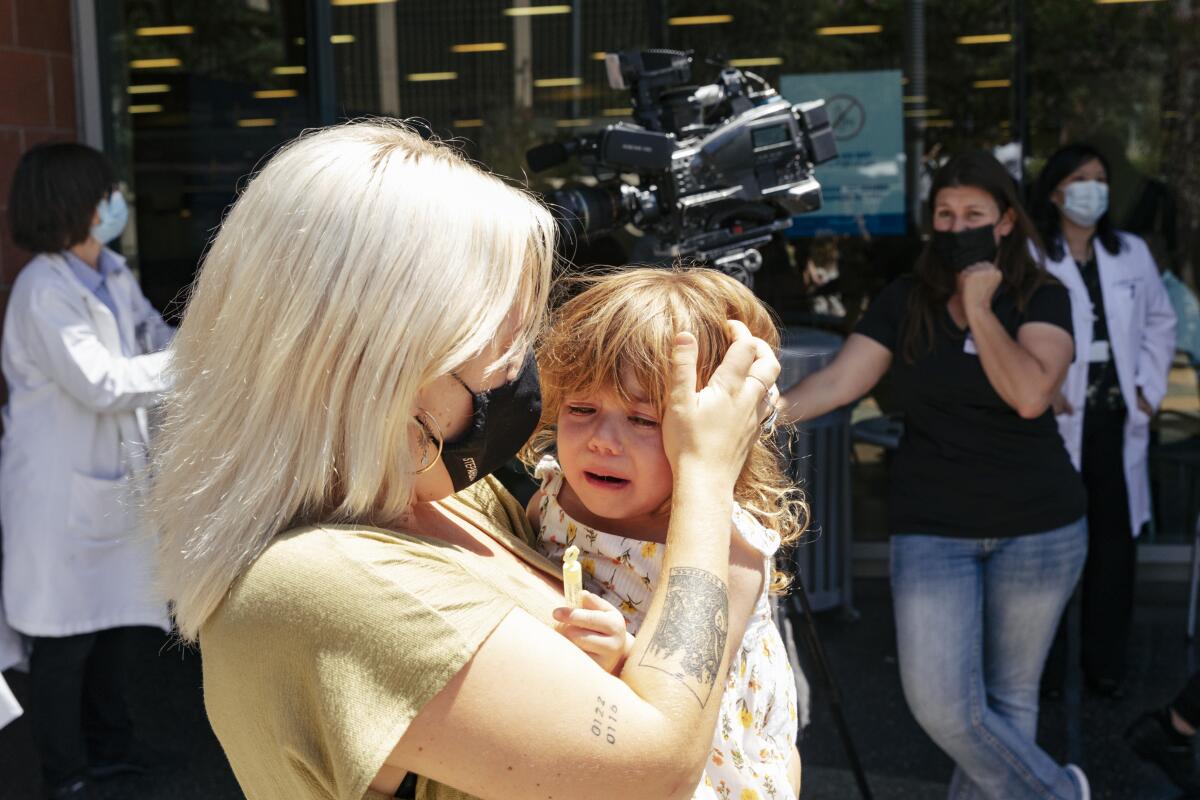
Though health officials acknowledge that COVID-19 generally hasn’t hit young people as hard as other age groups, they stress that kids are not immune to serious health impacts and that vaccines provide valuable protection.
“It’s true that children don’t get as sick as adults, but for children under 5, COVID is still the fifth leading cause of death,” Pannaraj said. “We also know that people who are vaccinated are 10 times less likely to die of COVID as those who are unvaccinated, so it’s very important that we’re able to protect the young ones.”
U.S. health advisors have recommended COVID-19 vaccines for infants, toddlers and preschoolers — the last group without the shots.
That remains the case even in today’s environment — in which the combination of widespread vaccine coverage, the availability of testing and therapeutics and the proliferation of the Omicron variant and its viral progeny has resulted in a wave that, to this point, has seen many cases but fewer hospitalizations than the pandemic’s earlier surges.
“For young people, again, they need to realize that even though Omicron may not be as serious for everyone in the aggregate, it’s certainly much more transmissible now, and if they let their guard down too much, they’re going to get it. And for some, it may still be a serious disease,” said UCLA epidemiologist Dr. Robert Kim-Farley.
In a joint statement, Ghaly and California Department of Public Health Director and State Public Health Officer Dr. Tomás Aragón noted that “COVID-19 hospitalizations for children under 4 years old were five times higher during the Omicron surge than during Delta, and 1 in 5 children hospitalized with COVID-19 were also admitted to the ICU.
“Studies have shown that getting our children vaccinated is the safest way to protect them from the worst outcomes of COVID-19, including hospitalization, long COVID, multisystem inflammatory syndrome in children and death,” the statement said. “Getting everyone in our homes and communities vaccinated reduces the chances for the virus to spread to those we love most.”
Summer vacation is starting and kids won’t be gathering at school by the hundreds. Will that help stem a COVID-19 surge?
For some, the shots provide more than protection — they give peace of mind.
“I think we’ll feel very comfortable doing indoor activities now,” Acain said. “We’ve gone back to most other things, but we don’t dine in at restaurants, generally, and avoid anything that’s crowded and inside.
“We’re comfortable now that if someone gets sick, we’ll be able to handle it,” she added.
More to Read
Sign up for Essential California
The most important California stories and recommendations in your inbox every morning.
You may occasionally receive promotional content from the Los Angeles Times.
